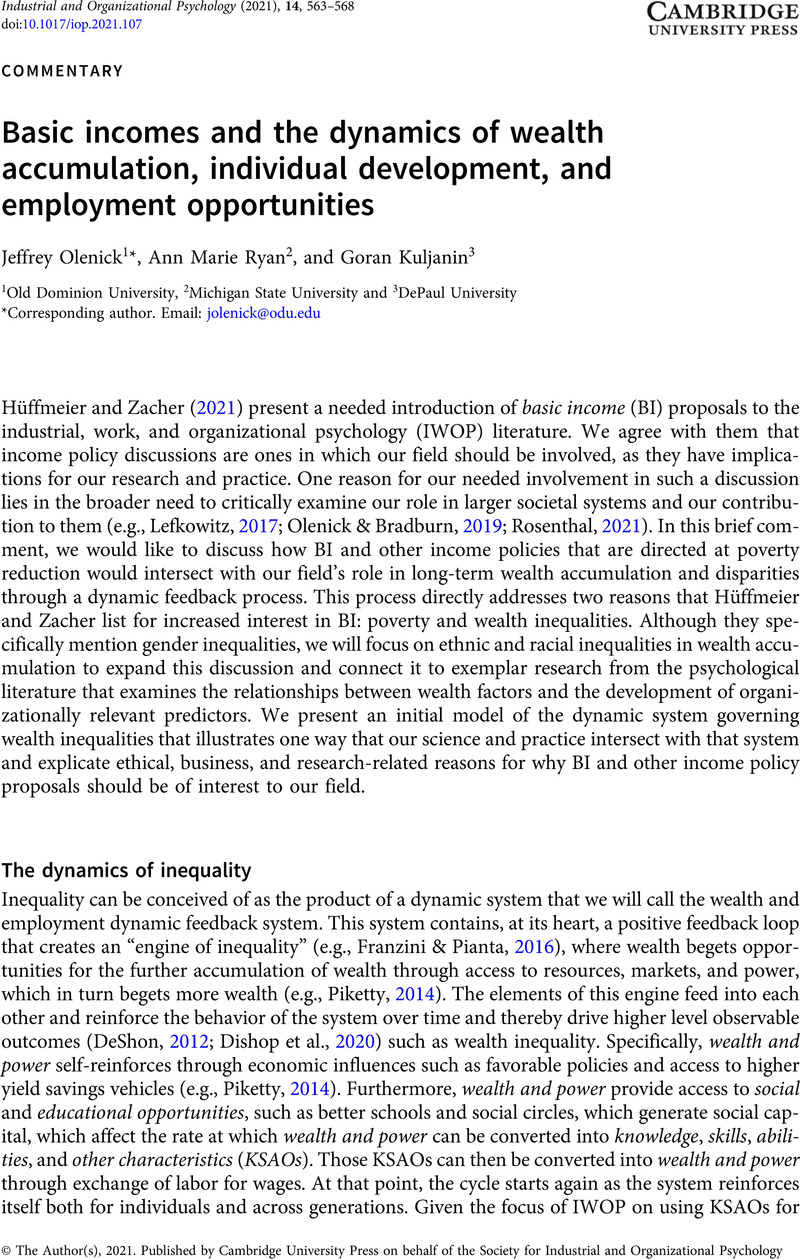Crossref Citations
This article has been cited by the following publications. This list is generated based on data provided by Crossref.
Olenick, Jeffrey
and
Dishop, Christopher
2022.
Clarifying dynamics for organizational research and interventions: A diversity example.
Organizational Psychology Review,
Vol. 12,
Issue. 4,
p.
365.



